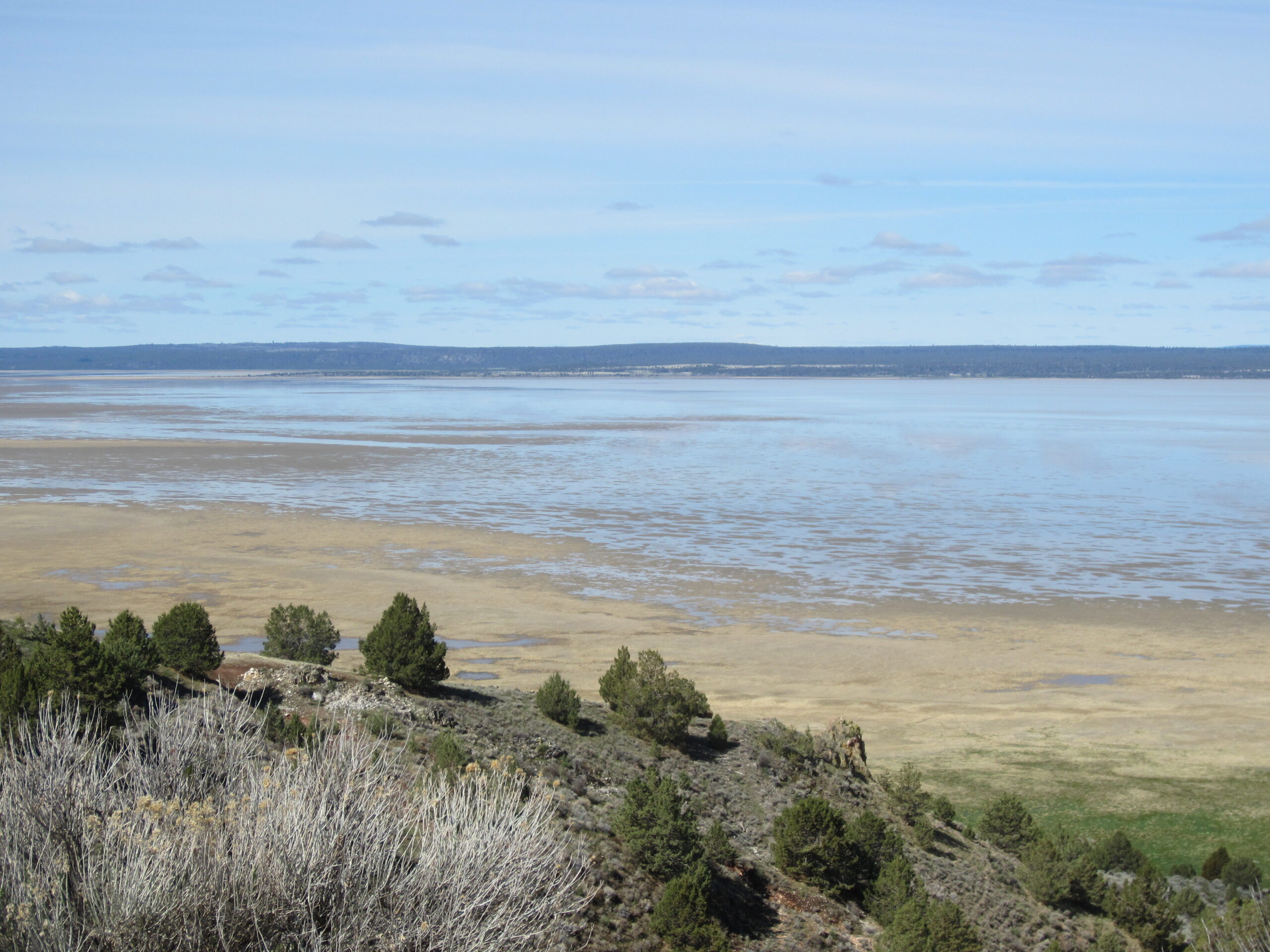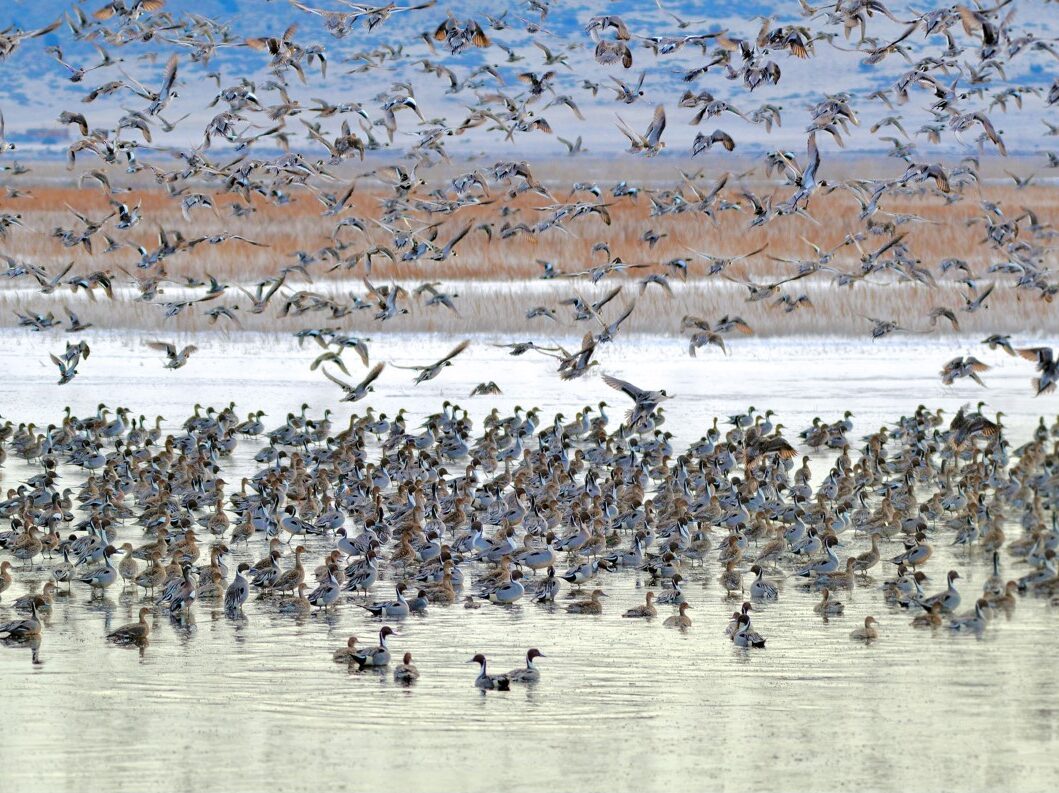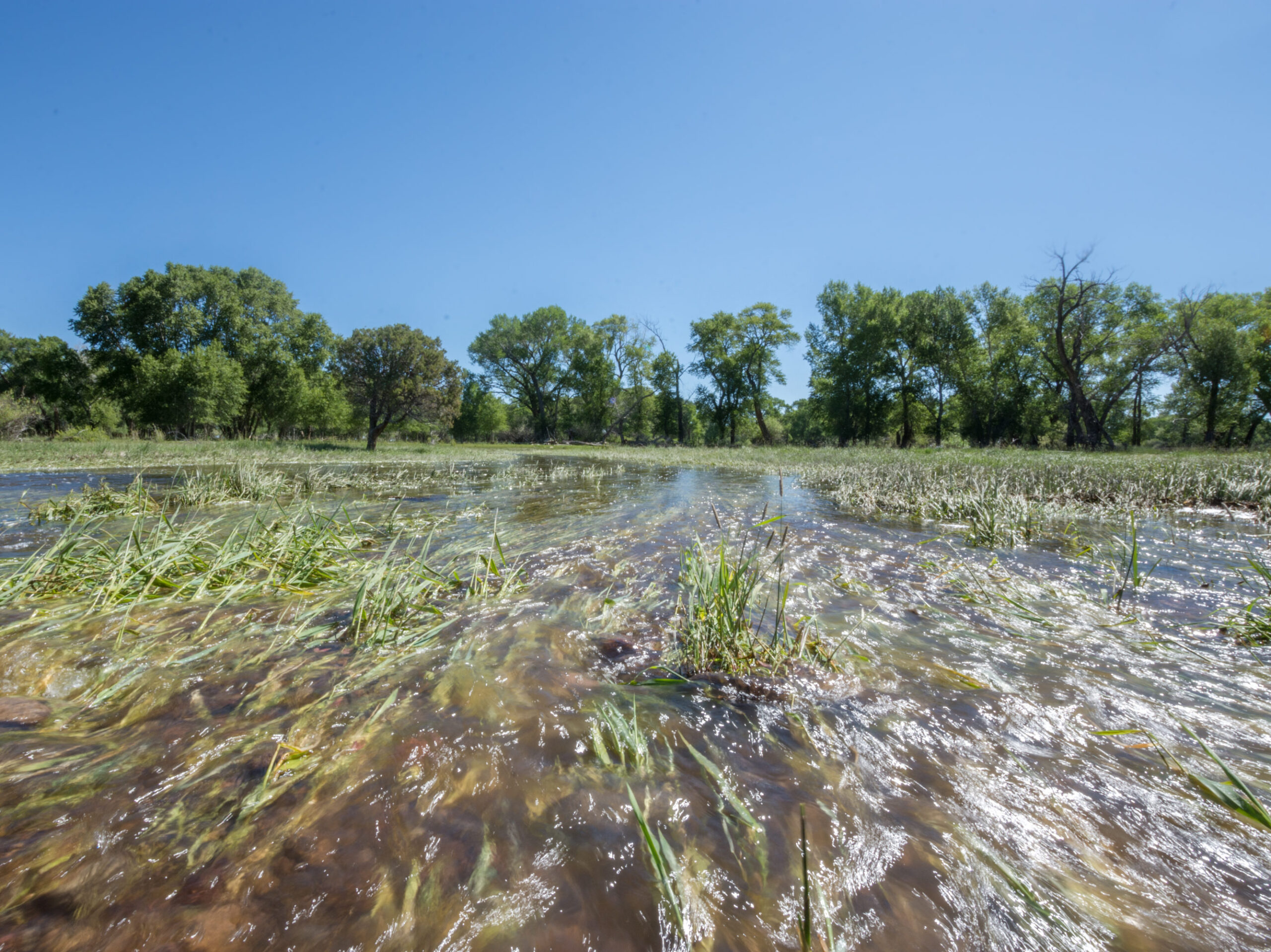-

·
Intermountain Insights: Climate Resilience in Persistent Pinyon-Juniper Woodlands
Pinyon-juniper woodlands are ubiquitous across the Intermountain West and important to many–from Tribal Nations and recreationists to pinyon jays and mule deer. However, concern has arisen among researchers and managers about their vulnerability to a warming and drying climate. Managers have indicated that they often lack the information needed to guide climate-smart management in woodland…
-

·
Intermountain Insights: Wetland Loss in the Pacific Flyway
A study from the Intermountain West Joint Venture and partners, Functional wetland loss drives emerging risks to waterbird migration networks, identified trends of severe wetland drying in the Southern Oregon Northeastern California (SONEC) region and California’s Central Valley, two of the most significant sites for migratory waterbirds in the Pacific Flyway. The good news? Managers can…
-

·
Intermountain Insights: White-Faced Ibis and Water in the West
This Intermountain Insights takes a look at a fascinating study on white-faced ibis and its implications for the conservation of wetlands in the Intermountain West. Researchers from the University of Montana and the Intermountain West Joint Venture conducted the first-ever long-term monitoring of white-faced ibis breeding habitat. Using satellite imagery, they estimated seasonal flooding across…
-

·
Intermountain Insights: The Call of the Cranes
Greater sandhill cranes rely on wetland habitat on private and public land throughout the West as they migrate to and from wintering and breeding grounds each fall and spring. New science from the Intermountain West Joint Venture (IWJV) identifies the landscapes and wetland sites most important to sustaining these seasonal migrations. The paper, Migration efficiency…
-

·
Intermountain Insights: Working Science for Working Landscapes
Agriculture and human settlement have long been tied to ecologically important wetland and riparian resources and the water they provide. For over one hundred years, this pattern has concentrated private land ownership in the West’s river bottoms and valleys, areas that are surrounded by publicly-owned sagebrush rangelands and forests. Those private lands account for only…
-

·
Intermountain Insights: Maintaining Resiliency of Continental Waterbird Flyways
Waterbirds in the Intermountain West rely on a limited number of important wetland sites as they migrate hundreds of miles between breeding grounds in the north and wintering grounds in the south. This network of wetlands is vital for resting and refueling on these long journeys. What is more, these sites are also important centers…
-

·
Intermountain Insights: Digging Deeper into Flood Irrigation
Western ranchers’ perspectives on enablers and constraints to flood irrigation (journal article) Flood irrigation on private rangelands maintains many wetland systems, which were historically dependent on natural flooding. It also sustains valuable wildlife resources such as foraging habitat for migrating and breeding waterbirds and late summer brood-rearing habitat for sage grouse. In the Intermountain West,…
-

·
Intermountain Insights: A Case Study of the Bi-State
On the California-Nevada border there is a genetically unique population of Greater Sage-grouse that lives in the far southwestern limit of the species’ range. Since 2002, Bi-State sage grouse, as they are informally known, have been petitioned for Endangered Species Act (ESA) listing several times. Although concerned for the species, many in the region feared the…